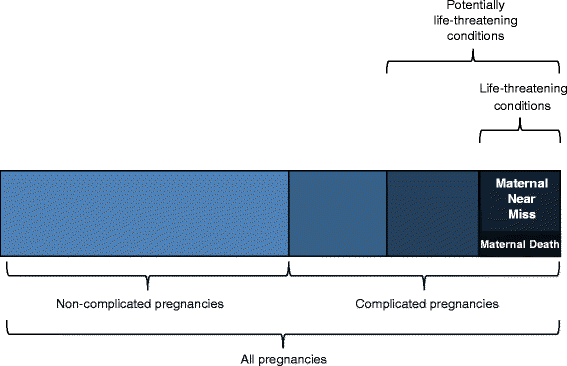Maternal morbidity measurement tool pilot: study protocol
- PMID: 27277959
- PMCID: PMC4899915
- DOI: 10.1186/s12978-016-0164-6
Maternal morbidity measurement tool pilot: study protocol
Abstract
Background: While it is estimated that for every maternal death, 20-30 women suffer morbidity, these estimates are not based on standardized methods and measures. Lack of an agreed-upon definition, identification criteria, standardized assessment tools, and indicators has limited valid, routine, and comparable measurements of maternal morbidity. The World Health Organization (WHO) convened the Maternal Morbidity Working Group (MMWG) to develop standardized methods to improve estimates of maternal morbidity. To date, the MMWG has developed a definition and provided input into the development of a set of measurement tools. This protocol outlines the pilot test for measuring maternal morbidity in antenatal and postnatal clinical populations using these new tools.
Methods: In each setting, the tools will be piloted on approximately 250 women receiving antenatal care (ANC) (at least 28 weeks pregnant) and 250 women receiving postpartum care (PPC) (at least 6 weeks postpartum). The tools will be administered by trained health care workers. Each tool has three modules as follows: 1. personal history - socio-economic information, and risk-factors (such as violence and substance abuse) 2. patient symptoms - WHO Disability Assessment Schedule (WHODAS) 12-item, and mental health questionnaires, General Anxiety Disorder, 7-item (GAD-7) and Personal Health Questionnaire, 9-item (PHQ-9) 3. physical examination - signs, laboratory tests and results.
Discussion: This pilot (planned for Jamaica, Kenya and Malawi) will allow for comparing the types of morbidities women experience between and across settings, and determine the feasibility, acceptability and utility of using a modified, streamlined tool for routine measurement and summary estimates of morbidity to inform resource allocation and service provision. As part of the post-2015 Sustainable Development Goals (SDGs) estimating and measuring maternal morbidity will be essential to ensure appropriate resources are allocated to address its impact and improve well-being.
Keywords: Definition; Maternal health; Maternal morbidity; Measurement; Pilot.
Figures
References
-
- World Health Organization. Estimates by WHO, UNICEF, UNFPA, The World Bank and the United Nations Population Division. Geneva: Trends in Maternal Mortality: 1990 to 2013; 2014.
-
- World Health Organization . Evaluating the quality of care for severe pregnancy complications: the WHO near-miss approach for maternal health. Geneva: WHO; 2011.
MeSH terms
Grants and funding
LinkOut - more resources
Full Text Sources
Other Literature Sources
Medical
Research Materials


